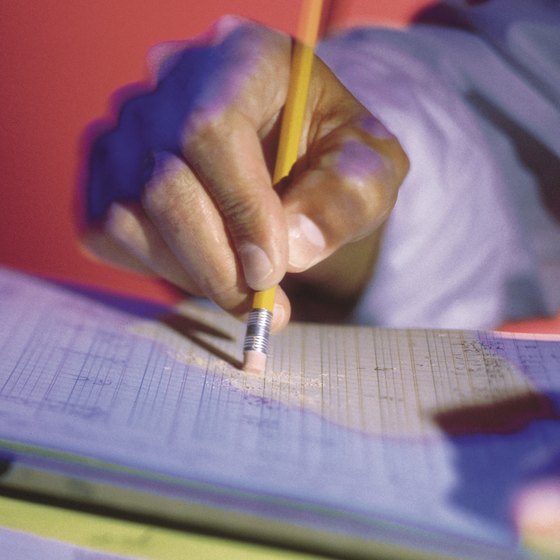Fundamental Accounting Equation

What is an accounting equation?
However, maintaining this equality does not ensure that the financial statements are correct; errors can exist even if the accounting equation balances. Show the relationship between the fundamental accounting equation and the structure of the balance sheet. shows a variety of assets that are reported at a total of $895,000. Creditors are owed $175,000, leaving $720,000 of stockholders’ equity.
This transaction affects both sides of the accounting equation; both the left and right side of the equation increase by +$250. For every transaction, both sides of this equation must have an equal net effect. Below are some examples of transactions and how they affect the accounting equation. Inventory is a current asset account found on the balance sheet, consisting of all raw materials, work-in-progress, and finished goods that a company has accumulated. It is often deemed the most illiquid of all current assets – thus, it is excluded from the numerator in the quick ratio calculation.
The fundamental accounting equation also forms the basis of the balance sheet and profit & loss account. Any transaction in a business, will without a doubt, impact one of the three variables.
This is the fundamental of double-entry bookkeeping system of accounting, which helps us understand from the illustration above that total assets should be equal to total liabilities. Assets refer to items like cash, inventory, accounts receivable, buildings, land or https://www.bookstime.com/accounting-and-finance equipment. This equation must balance because everything the firm owns (assets) has been purchased with some form of debt (liability) or shareholders’ capital (equity). T Accounts are used in accounting to track debits and credits and prepare financial statements.
The equation and what it means
Does the company have much higher liabilities than assets? This could indicate that you’re not managing your money very well. At all times, both sides of the accounting equation should balance out. In other words, if your business’s assets total $200,000, the sum of its liabilities plus owner’s equity should also be $200,000.
They can be fixed assets held by the entity for a considerable period of time and used year after year. Examples include land, machinery computers etc. There are also current assets forming a part of the working capital of the company. These assets keep on changing form from asset to money and back in the ordinary course of work.
In its most basic form, the accounting equation shows what a company owns, what a company owes, and what stake the owners have in the business. The equation starts off with the company assets. These are the resources that the company has to use in the future like cash, accounts receivable, equipment, and land.
business transaction affects at least two of a company’s accounts . For example, when a company borrows money from a bank, the company’s assets will increase and its liabilities will increase by the same amount.
- He forms Speakers, Inc. and contributes $100,000 to the company in exchange for all of its newly issued shares.
- This shows all company assets are acquired by either debt or equity financing.
- An exchange of cash for merchandise is a transaction.
- If your small business uses the double entry accounting system, you may have heard the term “accounting equation.” What does this mean, and why does it matter to your business?
- This is consistent with financial reporting where current assets and liabilities are always reported before long-term assets and liabilities.
However, a business’s trading activities, i.e. its income and expenses incurred in order to generate profit, are not shown in the balance sheet. Equity on the https://www.bookstime.com/ other hand is the shareholders’ claims on the company assets. This is the amount of money shareholders have contributed to the company for an ownership stake.
Some assets are tangible like cash while others are theoretical or intangible like goodwill or copyrights. Now that we have a basic understanding of the equation, let’s take a look at each accounting equation component starting with the assets. Liabilities are claims on the company assets by other companies or people. In other words, it’s the amount of money owed to other people.
These are the obligations of a business to pay its creditors, such as for accounts payable, accrued wages, and loans. The borrowing of $300,00 is not utilized towards the purchase of any asset or spend.
In other words, the total amount of all assets will always equal the sum of liabilities and shareholders’ equity. Based on this double-entry system, the accounting equation ensures that the balance sheet remains “balanced,” and each entry made on the debit side should have a corresponding entry (or coverage) on the credit side. After this a new balance sheet can be drawn up showing net assets of £27,045 and capital of £27,045. The business has made a profit or financial gain of £45 since the previous balance sheet.
What Does Accounting Equation Mean?
Assets include cash and cash equivalents or liquid assets, which may include Treasury bills and certificates of deposit. Accounts receivables are the amount of money owed to the company by its customers for the sale of its product and service. Inventory is also considered an asset. The accounting equation is considered to be the foundation of the double-entry accounting system.
The following examples are connected to the same business. Take a look at how different transactions accounts receivable affect the accounting equation. Then, see the business’s balance sheet at the end of this section.
The accounting equation plays a significant role as the foundation of the double entry bookkeeping system. The primary aim of the double entry system is to keep track of debits and credits, and ensure that the sum of these always matches up to the company assets, a calculation carried out by the accounting equation.

